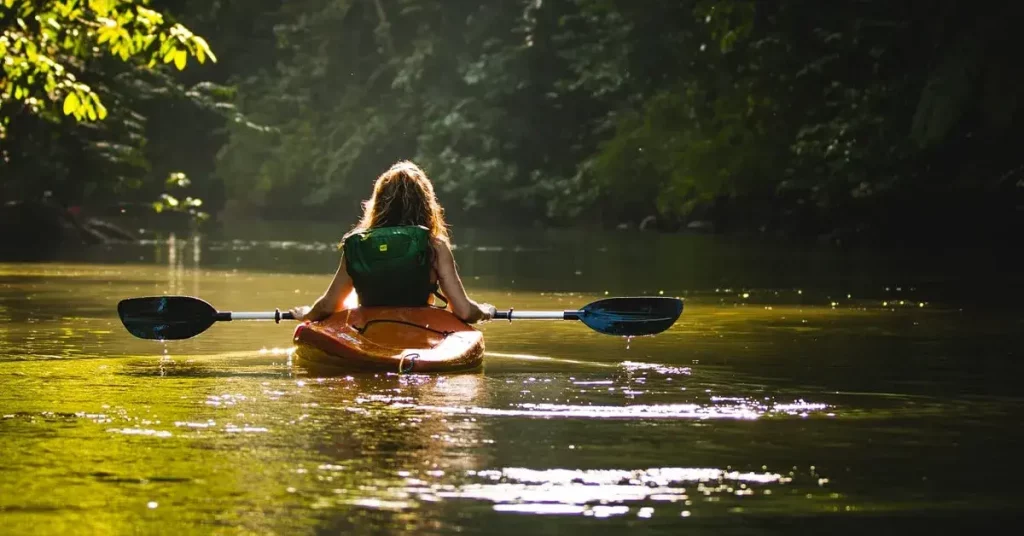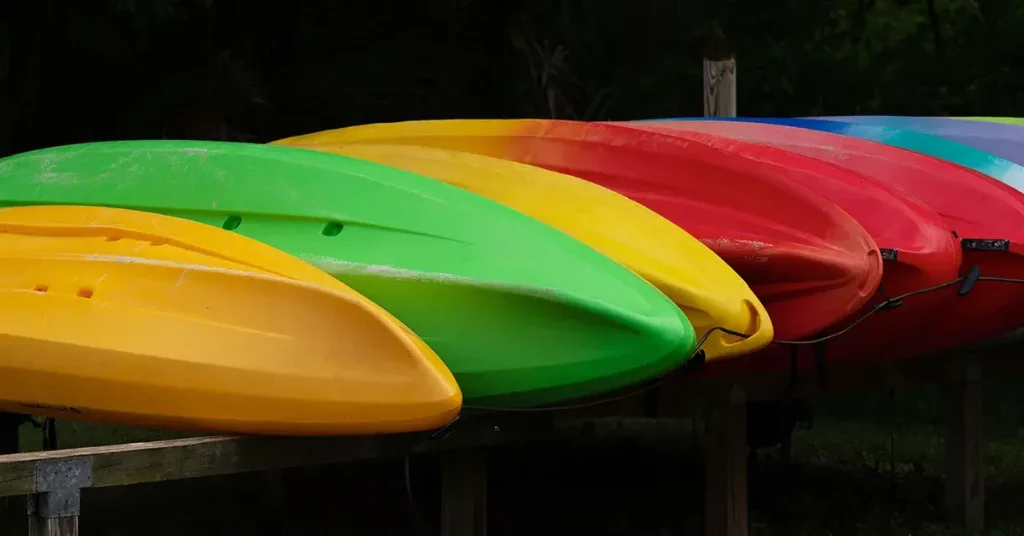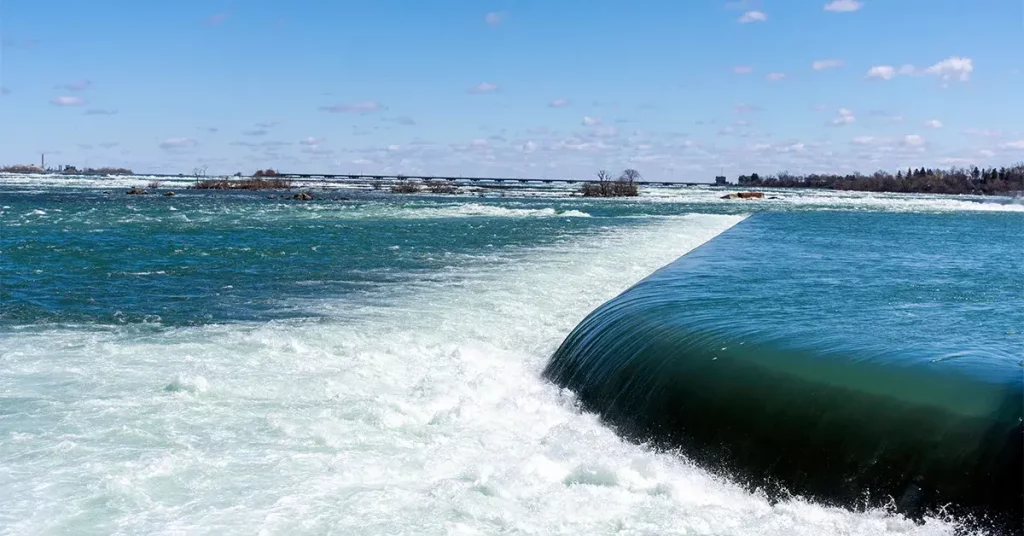Oar vs paddle, what the difference? You might have noticed many people will use the two terms interchangeably, but there are several distinct differences between the two, including different techniques used, different watercraft, and different competitive sports.
If you’re looking for the short answer, oars are directly mounted to the boat and used for rowing, while paddles are not attached to anything and are used for paddling.
Both oars and paddles are used to drive small, narrow watercraft through man-powered propulsion. They look somewhat similar to one other, although the technique used is significantly different.
Difference Between Oars and Paddles
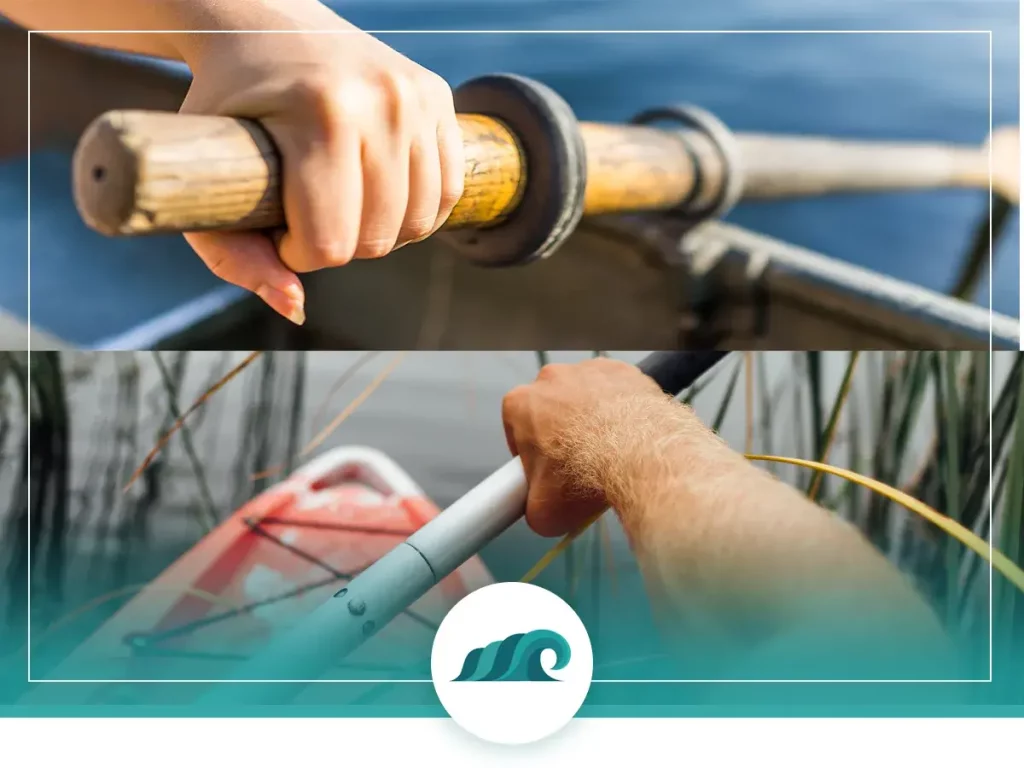
There are a few fundamental differences between oars and paddles. Let’s break down the oar vs paddle differences one by one.
Oars
Oars are used to propel a boat in the opposite direction from where the rower is facing. This means the rower is essentially traveling backward – and won’t be able to see where they’re heading without assistance or turning around.
In some competitive rowing events, a crew member known as the coxswain will sit in the rear of the boat facing the direction of travel. This crew member will provide directions to the crew, ensuring they steer in the right direction.
Unlike paddles, oars are mounted directly to the rowboat or scull with an oarlock. This keeps the oar in a fixed position while rowing, and acts as a fulcrum for the rowing motion. Oars provide a much more powerful stroke than paddles do, which is why larger boats utilize them for propulsion.
Oars are typically found on rowboats, sculls, sweep-oar boats, as well as small dinghies and rafts. In ancient Greek and Roman times, very long oars where commonly used to propel warships called triremes. These vessels utilized multiple rows of oars, with some using several oarsmen per oar.
Paddles
Paddles are used to propel a vessel in the same direction that the paddler is facing. They’re typically held with both hands and can be either single-bladed or double-bladed. Single-bladed paddles are typically used in canoes and rafts, while double-bladed paddles are used for kayaks.
Paddles are not mounted to anything, and must be held by the paddler during operation, or stored inside the craft. This makes a paddle leash important in rougher conditions to ensure you don’t lose your paddle.
Paddles are typically used with canoes, kayaks, stand up paddleboards, rafts, and other small boats.
Unlike oars, paddles aren’t partially supported by the boat. The fulcrum is formed by the paddlers two hands, with the upper hand stabilizing, while the lower hand drives the paddle. Because of this, they’re typically significantly lighter – enabling you to paddle for prolonged periods without tiring yourself out.
Paddles are drawn through the water from the bow (front) to the stern (rear) of the boat, enabling paddlers to see where they are they are traveling.
Materials
Kayak paddles are commonly made from fiberglass, aluminum, or carbon fiber. These materials keep the weight low, making prolonged paddling possible. Modern kayak paddles typically weight less than 2 pounds, with high-end models weighing a little over a pound.
Canoe paddles are traditionally made from hardwood, but newer composite and carbon fiber paddles are also available.
Oars are also traditionally made from hardwood, but carbon-fiber oars are now most commonly found in competitive rowing.
Rowing vs Paddling
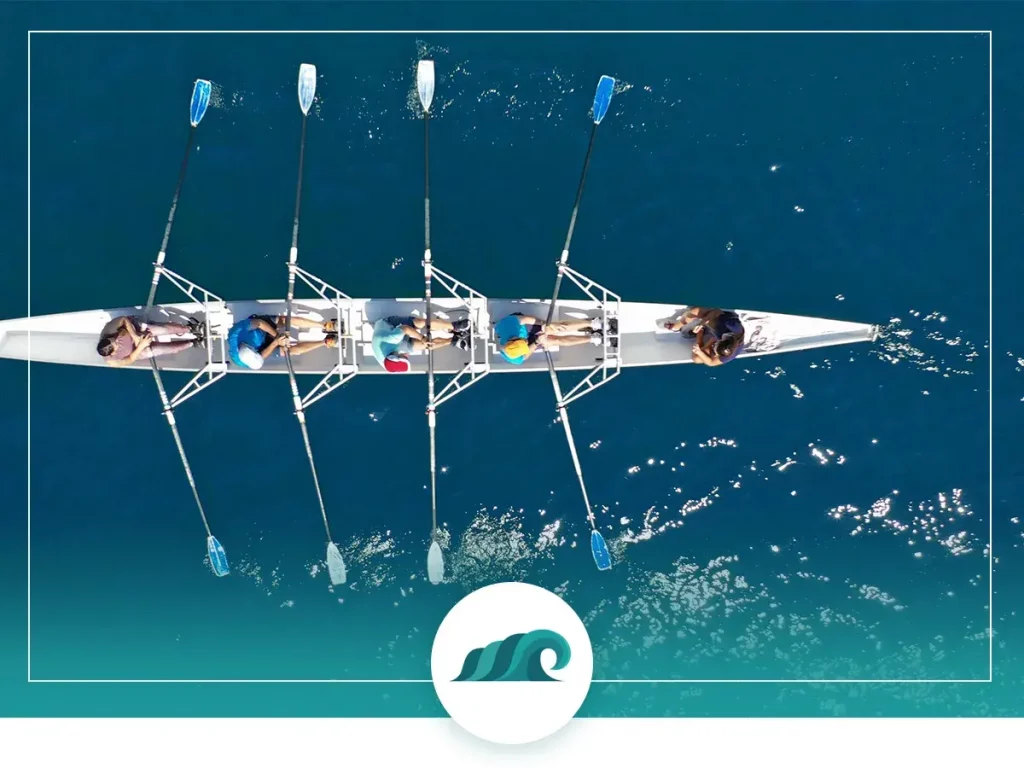
When discussing oar vs paddle differences, we would be remiss to neglect mentioning the techniques required to use them.
Rowing
The rowing stroke uses the entire body, particularly the back, arms, and legs. Sweep oar boats and sculls are designed with sliding seats, enabling you to utilize leg drive to add extra force to each stroke.
The motion is like that of a stationary rowing machine you’d find at the gym. Rowing machines are an excellent way to improve your strength and rowing technique when you can’t make it to the water.
Rowing boats are typically more expensive than canoes and kayaks, making them less accessible to the average recreational boater.
Paddling
Paddling uses slightly different muscles than rowing, with more emphasis on the core/abdominals/obloquies. Unlike rowing, your legs aren’t primary drivers during a paddle stoke – even though they do play a secondary role as stabilizers.
There’s no equivalent to the rowing machine for paddling, so you’ll need to either hit the water or work on your paddling muscles in the gym. Because kayaks, canoes, and stand up paddleboards are relatively inexpensive and accessible to beginners, getting started with paddling is something almost anyone can enjoy.
Take a look at this video for a breakdown of the basic kayak paddle strokes:
FAQ’s
Do you row or paddle a kayak?
You paddle a kayak, you do not row it. Padding propels a vessel in the same direction that the paddler is facing, while rowing propels a vessel in the opposite direction.
What is an oar used for?
An oar is used for rowing a watercraft. Unlike paddles, oars are mounted to the craft with an oarlock. This makes them highly effective at powerful propulsion.
Is rowing faster than kayaking?
Generally speaking, rowing will be faster than kayaking. The design of many rowing sculls enables the use of powerful leg muscles to drive the stroke, which provides more power and speed than a torso driven kayak stroke.
There are exceptions, however. Lightweight, touring kayaks can easily exceed the speed of slower rowboats.

